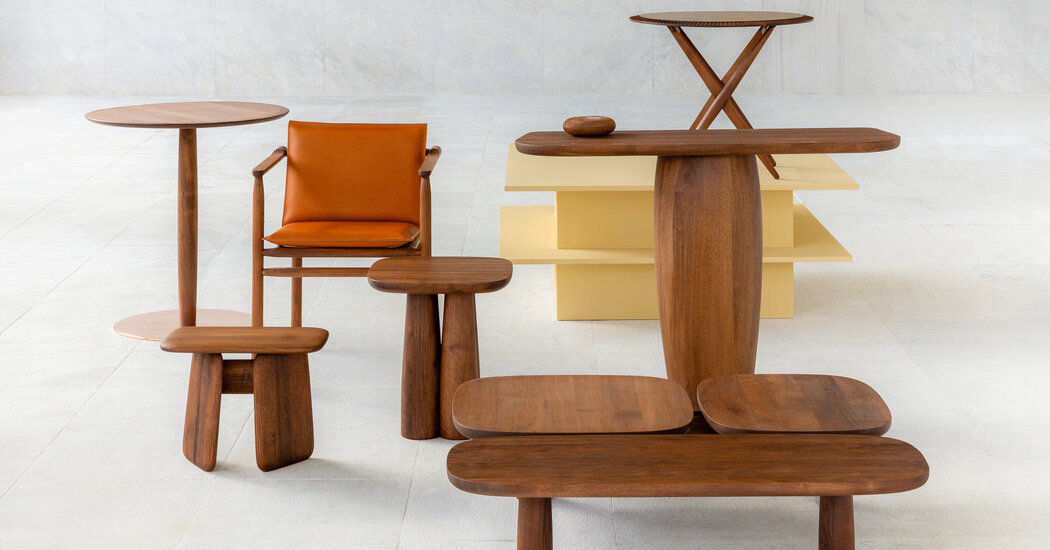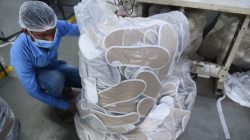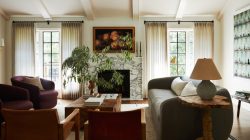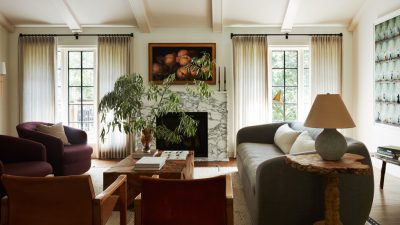This article is part of our Design special report previewing Milan Design Week.
Milan Design Week, which runs through Sunday, allows companies, collectives or designers to express a unified point of view that transcends the attractions of any single product. All the hand-carved furnishings shown by Zanat, a company in Bosnia and Herzegovina, for example, reflect a dedication to craft that the owners inherited from generations of woodworking family members, though different international designers contributed to the group. This is just one of many examples found through the festival of collections augmenting the messages of their parts.
A Global Get-Together
Zanat, a Bosnian furniture company led by Orhan Niksic, a descendant of generations of woodworkers, has returned to the Salone del Mobile with a dozen new products designed by eminent international designers.
Among the group is Naoto Fukasawa’s Genken console, which is named for the Japanese word for hallway and meant to signify the transition point between inside and outside a home. The tabletop evokes the outstretched arms of a welcoming host, and the storage box displayed on the surface was inspired by a seashell that hides its treasure (or in this case, house keys) within. Zanat is also introducing Mr. Fukasawa’s new Buna chair, a handcrafted piece that flows like the Balkan river of its name.
Oblong surfaces and short legs define Sebastian Herkner’s Sinja coffee table, a piece reflective of traditional low tables around which families in Mr. Niksic’s native Bosnia and Herzegovina would dine while sitting on the floor. Mr. Herkner also contributed the conical-legged Stolac side table.
Korzo, a bistro table by Patrick Norguet, departs slightly from its all-wood companions with its base of copper- or black-powder-coated steel.
The collection, which also includes a dining table and bench by Jean-Marie Massaud, and a bed (the company’s first) and night stand by Michele de Lucchi, is on view Tuesday through Sunday at the Salone del Mobile, Pavilion 24, stands L02-04; zanat.org. — JULIE LASKY
Witnessing a Metamorphosis
You should never ask a creative person to do something, Allegra Hicks said. “Because they will do it.”
Ms. Hicks, an Italian-born artist and designer, knows from experience. For Venice Glass Week in 2022, she painted a 63-square-meter (678-square-foot) tapestry before it was embroidered with 88 pounds of glass beads.
Last fall, she designed an installation for a 16th-century crypt: A diaphanous hanging was unfurled against one wall and a soft, ceiling-high crimson drop was positioned in front of the other. With that work, Ms. Hicks said, she sought “to transform the energy of the space.”
The idea of transformation also animates Metamorphosis, Ms. Hicks’s 11-piece collection for Nilufar, the Milanese design gallery. A painting on linen immersed in resin becomes a table top. Beneath it, hand-crocheted material cast in bronze becomes its base. Elsewhere, crocheted bronze becomes a lamp. The work, Ms. Hicks said, is about “transforming something that is considered soft and feminine” by giving it strength and “a kind of weight.”
Completing the living-room-like display are a silk-embroidered hanging, an embroidered sofa, side tables and a bar cabinet, with a hand-knotted rug tying everything together. Ms. Hicks gave the rug the appearance of a molting lizard’s skin — a look that reflects her own creative transformations.
When she was younger, the 63-year-old designer said, she was more cautious. Now, she added, “I don’t feel any boundaries.”
On view Monday through Sunday at Nilufar, Viale Vincenzo Lancetti 34; nilufar.com/en. — MEGAN McCREA
Time for Yourself
“There is a great contrast between the solidity of stone and smoothness of steel,” Patricia Urquiola said about the marriage of natural and industrial materials in her new bathroom collection for Salvatori. The 22-piece group of fixtures and accessories, called the Small Hours, treats the chamber as an indulgent retreat. The name invokes the late night or early morning stretches when everyone around you is fast asleep and the world is yours to enjoy privately.
“It’s your own time,” said Gabriele Salvatori, who leads the company.
Mr. Salvatori said he handed the collection’s design to Ms. Urquiola because “she has one of the most precious traits every human being should have: the ability to look sideways and challenge the status quo.” Both he and his collaborator cited the extensive use of steel as a detour from the norm in upscale bathrooms.
The line includes wall-hung, countertop and free-standing wash basins; a brushed stainless-steel backsplash; LED-illuminated mirrors; storage items; and a round bathtub.
Ms. Urquiola described the production process as “slow and passionate.” Humor was also involved. The mirrors can be ordered with the words, “Believe me or your eyes,” inspired by a famous Marx Brothers quote. The impish gesture, Mr. Salvatori said, is reminiscent of a message scrawled in lipstick across the glass.
The collection, which will be available in July, is on view Tuesday through Sunday in Salvatori’s showroom at Via Solferino 11; salvatoriofficial.com. — ARLENE HIRST
A Double Dose of Design
By now, the architect, designer and Milan fixture Piero Lissoni can consider himself a Salone del Mobile veteran. Over the past four decades, he has designed furniture, kitchens and materials for many of the standout companies represented at the fair. Even this year, his list of projects sounds more like a life’s work. “B&B Italia, Flos, Porro, De Padova, Kartell,” he rattled off. “A new generation of kitchens for Boffi. New sofas for Living Divani.”
But the thrill, he said, never gets old: “The design week, for me, is like a beautiful performance. Every year I discover new things. It’s a no-limits invitation to Disneyland.”
As usual, Lissoni creations will be distributed among the Salone fairgrounds and major city-center showrooms. But this year the designer is also inviting visitors to peek into his own headquarters in the fashionable Brera district.
“The open studio is a great moment to show the public our day-by-day life,” he said. In addition to flaunting the studio’s recent architectural projects — like the Dorothea Hotel in Budapest and the spa at the Fontainebleau Las Vegas — the creative team will display the results of its annual in-house competition to design a full-scale installation for Milan Design Week. This year, the entries skewed botanic, Mr. Lissoni said. The results are “very poetic; you’ll have the feeling of being inside a blossom.”
And what does the winner get? “I offer a beautiful coffee and one gin and tonic in the afternoon,” he said. “Listen, it’s a good prize.”
The open studio runs Tuesday through Friday from 11 a.m. to 5 p.m. at Lissoni & Partners, Via Goito 9; lissoniandpartners.com. — LAURA MAY TODD
Reimagining the Home Interior
In “Objects May Shift,” organized by the Rhode Island School of Design (and RISD’s first-ever global multidisciplinary presentation of work, according to a news release), students and faculty members from several departments have produced an exhibition exploring “our ever-evolving relationship to — and experience of — the domestic interior.”
Presented at SaloneSatellite — the pavilion at the Salone del Mobile that focuses on the work of young designers — the show is directed by Anais Missakian, a faculty member of the RISD textile department for more than three decades, and Pete Oyler, an associate professor of furniture design.
“Objects May Shift” is the outgrowth of a studio course called Topics in Exhibition that drew from the departments of ceramics, furniture design, glass, graphic design, industrial design, interior architecture and textiles. Among the pieces are “The Knit Wiggle,” an upholstered seat that inflates to become a wall, and “Untitled (Hoard),” a woven jacquard tapestry that combines A.I.-generated imagery with images of wealth, hoarding and trash. “Chair 03, Amate,” a seat with a gridlike structure, was made of cornstarch, cotton, mulberry fiber and post-consumer paper pulp.
Referring to the collection’s interlacing of disciplines, Ms. Missakian noted that “good design is porous as well as functional.”
On view Tuesday through Sunday in booth A10 of the SaloneSatellite; shift.risd.edu. — PILAR VILADAS
Sumber: www.nytimes.com












